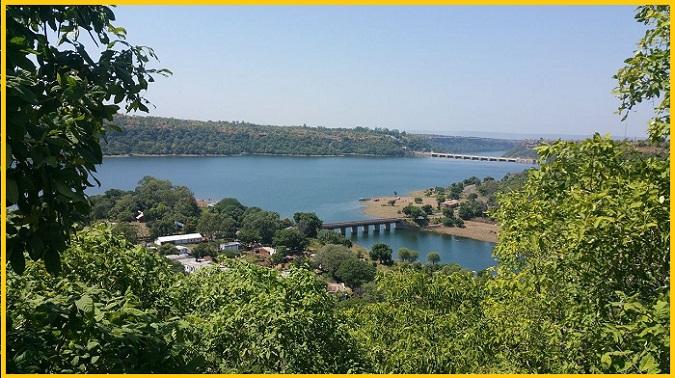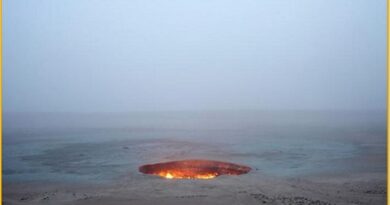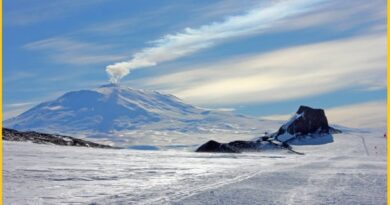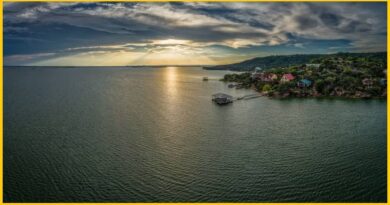Scenic and Attractive location-Gandhi Sagar Dam in Chambal River India
The Gandhi Sagar Dam
The Gandhi Sagar Dam is one of the four major dams built on India’s Chambal River. The dam is located nearly 168 km. from the Mandsaur, the district headquarters of the state of Madhya Pradesh. It is a masonry gravity dam, standing 62.17 meters. The Foundation stone for the construction of Gandhi Sagar Dam was laid on the 7th of March 1954. The work was started in 1957 in the Dam/power station, while power generation and distribution commenced in November 1960. The Power Station has five turbines of 23 M.W. The dam has a gross storage capacity of 7.322 billion cubic meters from a catchment area of 22,584 km2 The water released after power generation is used for the irrigation of 427,000 hectares by the Kota Barrage, which is located 104 kilometers downstream of the dam, near the city of Kota in the state of Rajasthan.

Geology and Geography
The Dam is located in the Malwa Plateau Madhya Pradesh. The region is occupied by rocks of two chronologically different geological domains. The uppermost sequence comprises a thick cover of basaltic lava flows and associated inter trappean of the Deccan trap complex covering the sedimentary sequence of the Vindhyan supergroup. In some places, the Deccan trap complex overlies the Suket shale formation of the Khorip group of the Vindhyan Supergroup.
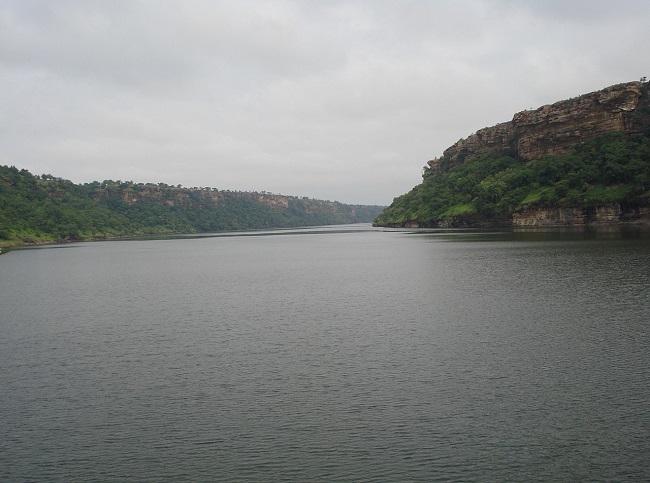
The Chambal River (known in ancient times as the Chamranyavati River) raises in the Vindhya Range at an elevation of 853 meters, southwest of the town of Mhow, near Indore. It flows north-northeast through Madhya Pradesh, runs for a few kilometers through Rajasthan, then forms the boundary between Rajasthan and Madhya Pradesh before joining the Yamuna River in the state of Uttar Pradesh. The total length of the Chambal river from its source to its confluence with the Yamuna River is 900 kilometers. Between 344 kilometers and 440 kilometers from the Chambal’s source is an area of deep gorges, the Gandhi Sagar Dam is located in the middle reach of this gorge section. The Chambal river and its tributaries drain the Malwa region of northwestern Madhya Pradesh, and it’s one more tributary, the Banas, which rises in the Aravalli Range, drains southeastern Rajasthan. Chambal joins 3 other rivers At its confluence with the Yamuna- Kwari, Sind, and Pahuj, at Pachnada near Bhareh in Uttar Pradesh, at the border of the Bhind and Etawah districts.
What type of Dam is Gandhi Sagar Dam
Gandhi Sagar Dam is a masonry gravity dam with a height of 62.17 meters and a length of 514 meters. The reservoir has a gross storage capacity of 7.32 billion cubic meters, corresponding to the Full Reservoir Level of 400 meters. The spillway of the dam is designed for a discharge of 21,238 cubic meters per second. There are 10 gated spillway spans to pass the designed flood discharge. The hydroelectric power station is located at the toe of the dam on the right bank. The power station has an installation of 142 MW with five turbines of 23 MW and one unit of 27 MW capacity. The power station is 65 meters long and 17 m wide. Power is supplied first to the local district and then to other regions of Madhya Pradesh and Rajasthan.
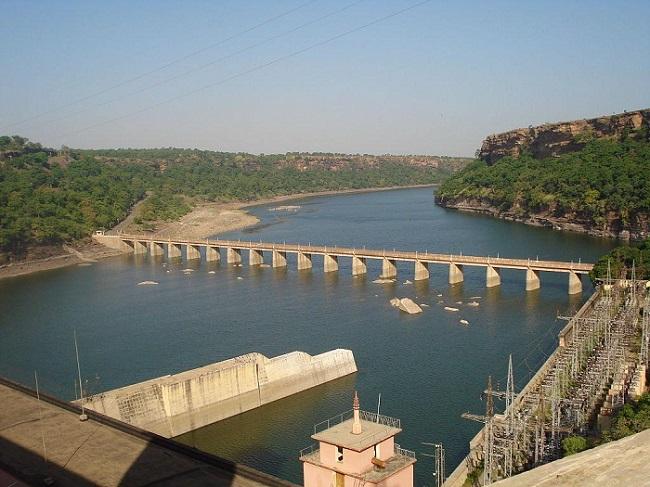
Reservoir
The reservoir created by the dam is the third largest in India, with a total area of 723 km2. The catchment area of the Chambal River from the Vindhyachal ranges to the south and Aravalli to the northeast, covering a drainage area of 22,584 km2, important tributaries that discharge into the Chambal upstream of this reservoir include the Shipra, Chhoti, Kalisindh, Ansar, and Rupniya on the eastern side, and the Tilsoi, Edar, Retum, and Shivna in the west. The maximum length and width of the reservoir are 68 kilometers and 26 kilometers, respectively.
The Gandhi Sagar Wildlife Sanctuary, which has an area of 36,700 hectares, falls in the Mandsaur and Neemuch districts and is situated in the catchment area of the Gandhi Sagar reservoir. The sanctuary’s forested area was once a hunting area for the Holkar royal family of Indore. The reservoir is under the control of the irrigation and fisheries departments of the Government of Madhya Pradesh and is mostly used for fisheries development.
Attraction near Gandhi Sagar Dam
The Gandhi Sagar Wildlife Sanctuary
Gandhi Sagar Sanctuary is a wildlife sanctuary situated on the northern boundary of the Mandsaur and Nimach districts. It is spread over an area of 368.62 km2 adjoining Rajasthan state. the area was notified in 1974 and more area was added in 1983. The Chambal River passes through the sanctuary dividing it into two parts. The western part is in the Nimach district and the eastern part is in the Mandsaur district. The terrain of the area presents spectacular landscapes. The topography in the vicinity of the Gandhisagar Dam site is of Scenic value. The site in and around the Gandhisagar Dam really present a splendid site, which invariably attracts thousands of tourist every year. Along the bank of the Chambal river, forest covers and Sedimentary rocks enhance the value of the site and at the same time draws thousands of birds into that zone including indigenous and migratory ones.
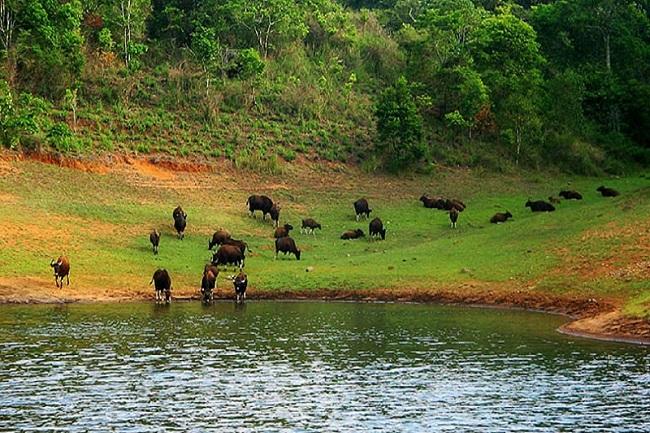
Gandhi Sagar sanctuary is classified as a dry deciduous forest with about 15 species of animals, 226 species of birds, and over 500 species of angiosperms. Out of six species of vultures found here, two are of ‘critically endangered status. Winter season migratory birds in the nearby Chambal river add beauty and charm to the sanctuary and rocks on either side of the river makes a perfect habitat for vulture nests and breeding. The Dam area attracts many migratory and non-migratory birds throughout the year. The International BirdLife Agency (IBA) has qualified the reservoir under “A4iii” criteria, as the congregation of waterbirds is reported to exceed 20,000 at some points.
Bada Mahadev Waterfall
Bada Mahadev Waterfall is a beautiful natural waterfall located at Bhanpura in Mandsaur. it shows its might and beauty in the rainy season. The waterfall is the best place for a family Picnic in the Rainy season. The water of the waterfall is naturally fulfilled with minerals.
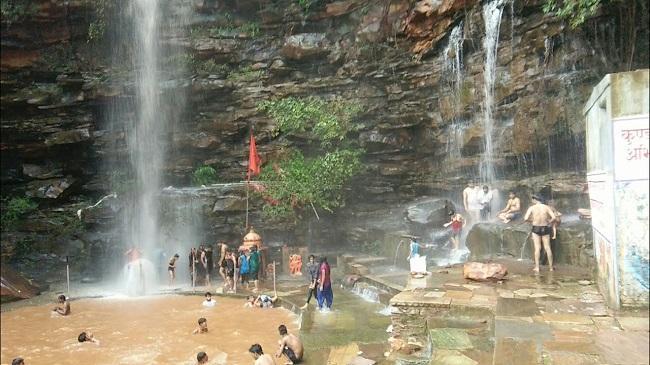
Takhaji temple and Bhadkaji temple
Worshipping places like Takhaji temple and Bhadkaji temple is giving good wishes. Taxakeshwar temple, which the locals call Takhaji temple. This is the abode of Taxak, the serpent king. The idol of the serpent king is believed to have been installed during the 12th century.
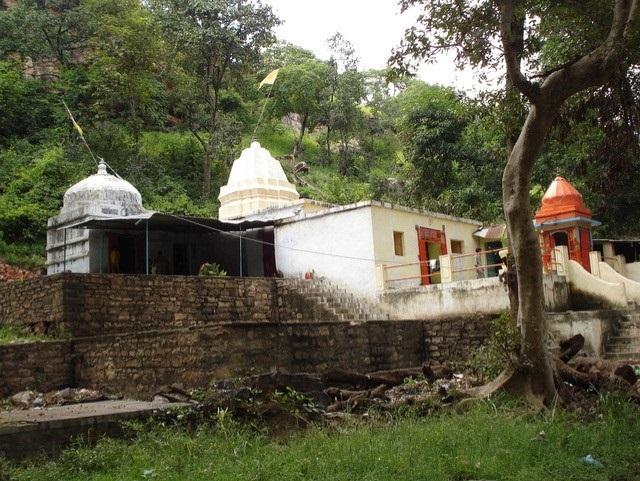
Hinglajgarh Fort
Hinglajgarh Fort is an ancient fort situated near village Navali in Bhanpura tehsil of Mandsaur district. It is situated 165 km from Mandsaur town and 26 km from Bhanpura town. This fort was at its peak of grandeur during Parmara’s rule. There are many artistic sculptures of various periods in this fort. The Hinglajgarh fort was the center of excellence in the craftsmanship of sculptures for about 800 years. The statues recovered from this fort are from the Guptas period to the Parmara period. The most ancient statues are from the 4th–5th century AD. In the southern part of the Hinglaj Fort are situated Hinglaj Mata temple, Rama-Hanuman Temple, Darbar Kaksha, Rani Mahal, and Shiva Temple.
Pola Dungar
Pola Dungar is an archaeological site in Garoth tahsil of Mandsaur district in Madhya Pradesh. This is an Awesome place to visit and expand some time exploring Buddhist sites.
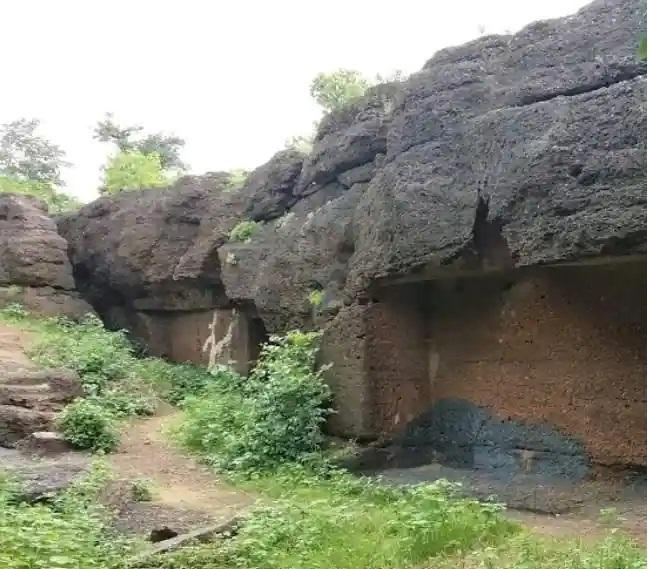
Chaturbhuj Nala Rock Painting
It is a popular rock painting site in Bhanpura town, Mandsaur. Thus if you are in Rajasthan or Madhya Pradesh, you can easily visit this ancient archaeological site. Apart from the main Chambal river, there is a separate nullah, which connects both the dam reservoirs known as “Chaturbhuj Nala”. It is a rocky region through which water flows. While traversing through this nullah, people can find rock paintings on both the sides of rocks. It is a long stretch and is thus considered the largest rock painting site in Madhya Pradesh state.
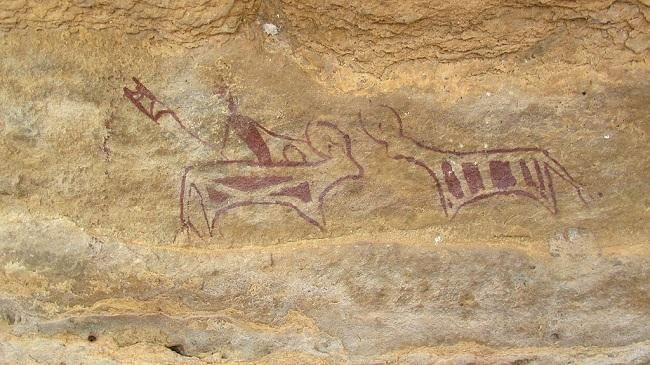
Things to Do at Gandhi Sagar Dam
Gandhi Sagar Dam is One of the largest dams in India and a popular tourist Attraction. The dam spans the Chambal River and forms a large artificial lake, offering Touritic a chance to enjoy a variety of water sports, like Boating, fishing, and swimming activities. The dam is also a well-known spot for bird watching. It attracts many migratory and domestic birds throughout the year. The congregation of water birds exceeds 20,000 at some parts of the reservoir. The reservoir created by the Gandhisagar dam is the third largest in India after the Indiranagar Reservoir and Hirakud Reservoir. The Gandhi Sagar Wildlife sanctuary situated near the surrounding Reservoir creates an amazing atmosphere for tourists. There is no entrance fee for Gandhi Sagar Dam but if you are planning to do boating and other water sports the pricing is extra.
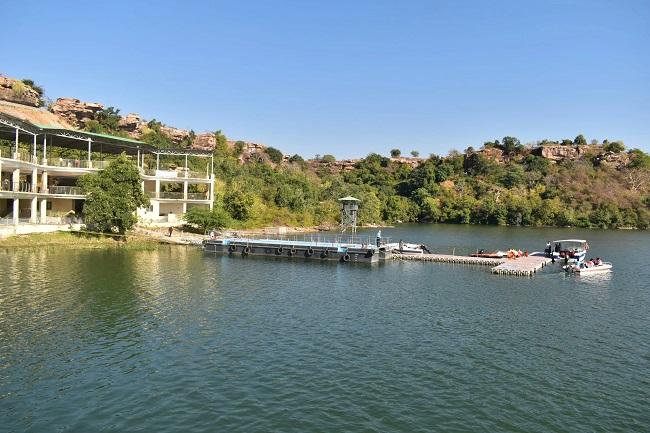
Best Time to Visit Gandhi Sagar Dam
The best time to visit the Gandhi Sagar Dam is during the monsoon season. During this time, the dam is filled with water, and the surrounding area flourishes with lush greenery. There is also a chance to see the gates opening up to release the excess water. During the monsoon months, all 19 gates of the dam open up offering spectacular views and this happens generally in August. Be prepared for rain. sure to pack your rain gear, as the rains can be heavy at times.
Also, read- A Unique volcanic field in Algeria-The Hoggar Mountains
How to reach Gandhi Sagar Dam
The best way to reach Gandhi Sagar Dam is Ramgunj Mandi Junction railway station at a distance of 55 km. or Shamgarh Railway station at a distance of 130 km. one can also reach by nearest Kota airport which is 110 km from Gandhi Sagar dam.
